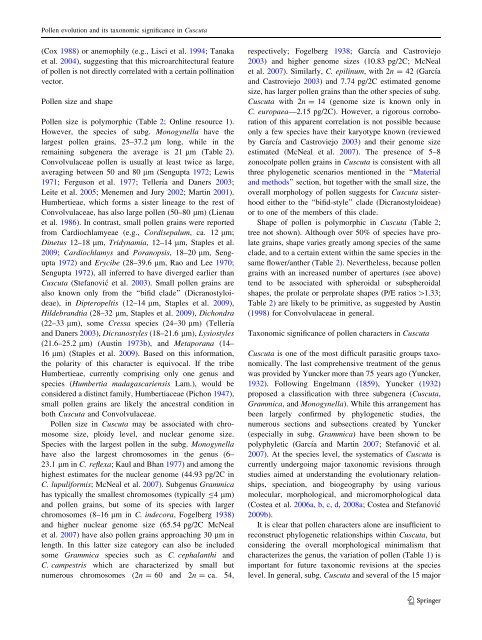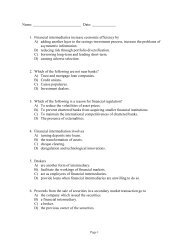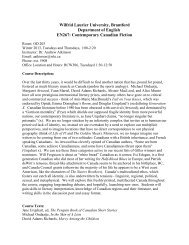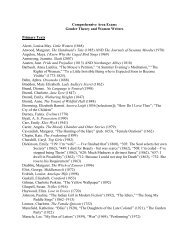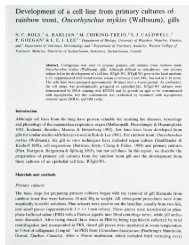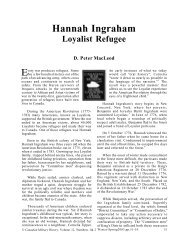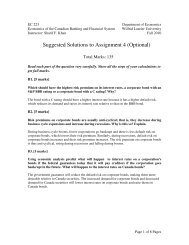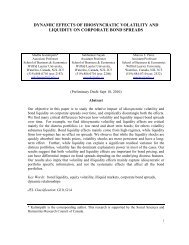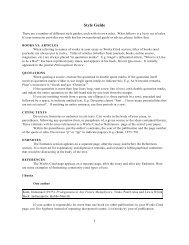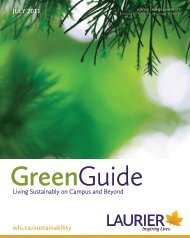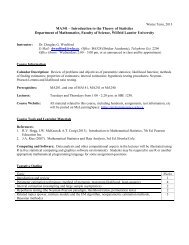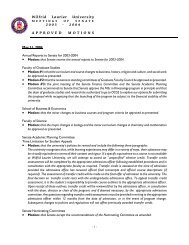Pollen evolution and its taxonomic significance in Cuscuta (dodders ...
Pollen evolution and its taxonomic significance in Cuscuta (dodders ...
Pollen evolution and its taxonomic significance in Cuscuta (dodders ...
Create successful ePaper yourself
Turn your PDF publications into a flip-book with our unique Google optimized e-Paper software.
<strong>Pollen</strong> <strong>evolution</strong> <strong>and</strong> <strong>its</strong> <strong>taxonomic</strong> <strong>significance</strong> <strong>in</strong> <strong>Cuscuta</strong><br />
(Cox 1988) or anemophily (e.g., Lisci et al. 1994; Tanaka<br />
et al. 2004), suggest<strong>in</strong>g that this microarchitectural feature<br />
of pollen is not directly correlated with a certa<strong>in</strong> poll<strong>in</strong>ation<br />
vector.<br />
<strong>Pollen</strong> size <strong>and</strong> shape<br />
<strong>Pollen</strong> size is polymorphic (Table 2; Onl<strong>in</strong>e resource 1).<br />
However, the species of subg. Monogynella have the<br />
largest pollen gra<strong>in</strong>s, 25–37.2 lm long, while <strong>in</strong> the<br />
rema<strong>in</strong><strong>in</strong>g subgenera the average is 21 lm (Table 2).<br />
Convolvulaceae pollen is usually at least twice as large,<br />
averag<strong>in</strong>g between 50 <strong>and</strong> 80 lm (Sengupta 1972; Lewis<br />
1971; Ferguson et al. 1977; Tellería <strong>and</strong> Daners 2003;<br />
Leite et al. 2005; Menemen <strong>and</strong> Jury 2002; Mart<strong>in</strong> 2001).<br />
Humbertieae, which forms a sister l<strong>in</strong>eage to the rest of<br />
Convolvulaceae, has also large pollen (50–80 lm) (Lienau<br />
et al. 1986). In contrast, small pollen gra<strong>in</strong>s were reported<br />
from Cardiochlamyeae (e.g., Cordisepalum, ca. 12 lm;<br />
D<strong>in</strong>etus 12–18 lm, Tridynamia, 12–14 lm, Staples et al.<br />
2009; Cardiochlamys <strong>and</strong> Poranopsis, 18–20 lm, Sengupta<br />
1972) <strong>and</strong> Erycibe (28–39.6 lm, Rao <strong>and</strong> Lee 1970;<br />
Sengupta 1972), all <strong>in</strong>ferred to have diverged earlier than<br />
<strong>Cuscuta</strong> (Stefanović et al. 2003). Small pollen gra<strong>in</strong>s are<br />
also known only from the ‘‘bifid clade’’ (Dicranostyloideae),<br />
<strong>in</strong> Dipteropeltis (12–14 lm, Staples et al. 2009),<br />
Hildebr<strong>and</strong>tia (28–32 lm, Staples et al. 2009), Dichondra<br />
(22–33 lm), some Cressa species (24–30 lm) (Tellería<br />
<strong>and</strong> Daners 2003), Dicranostyles (18–21.6 lm), Lysiostyles<br />
(21.6–25.2 lm) (Aust<strong>in</strong> 1973b), <strong>and</strong> Metaporana (14–<br />
16 lm) (Staples et al. 2009). Based on this <strong>in</strong>formation,<br />
the polarity of this character is equivocal. If the tribe<br />
Humbertieae, currently compris<strong>in</strong>g only one genus <strong>and</strong><br />
species (Humbertia madagascariensis Lam.), would be<br />
considered a dist<strong>in</strong>ct family, Humbertiaceae (Pichon 1947),<br />
small pollen gra<strong>in</strong>s are likely the ancestral condition <strong>in</strong><br />
both <strong>Cuscuta</strong> <strong>and</strong> Convolvulaceae.<br />
<strong>Pollen</strong> size <strong>in</strong> <strong>Cuscuta</strong> may be associated with chromosome<br />
size, ploidy level, <strong>and</strong> nuclear genome size.<br />
Species with the largest pollen <strong>in</strong> the subg. Monogynella<br />
have also the largest chromosomes <strong>in</strong> the genus (6–<br />
23.1 lm<strong>in</strong>C. reflexa; Kaul <strong>and</strong> Bhan 1977) <strong>and</strong> among the<br />
highest estimates for the nuclear genome (44.93 pg/2C <strong>in</strong><br />
C. lupuliformis; McNeal et al. 2007). Subgenus Grammica<br />
has typically the smallest chromosomes (typically B4 lm)<br />
<strong>and</strong> pollen gra<strong>in</strong>s, but some of <strong>its</strong> species with larger<br />
chromosomes (8–16 lm <strong>in</strong>C. <strong>in</strong>decora, Fogelberg 1938)<br />
<strong>and</strong> higher nuclear genome size (65.54 pg/2C McNeal<br />
et al. 2007) have also pollen gra<strong>in</strong>s approach<strong>in</strong>g 30 lm <strong>in</strong><br />
length. In this latter size category can also be <strong>in</strong>cluded<br />
some Grammica species such as C. cephalanthi <strong>and</strong><br />
C. campestris which are characterized by small but<br />
numerous chromosomes (2n = 60 <strong>and</strong> 2n = ca. 54,<br />
respectively; Fogelberg 1938; García <strong>and</strong> Castroviejo<br />
2003) <strong>and</strong> higher genome sizes (10.83 pg/2C; McNeal<br />
et al. 2007). Similarly, C. epil<strong>in</strong>um, with 2n = 42 (García<br />
<strong>and</strong> Castroviejo 2003) <strong>and</strong> 7.74 pg/2C estimated genome<br />
size, has larger pollen gra<strong>in</strong>s than the other species of subg.<br />
<strong>Cuscuta</strong> with 2n = 14 (genome size is known only <strong>in</strong><br />
C. europaea—2.15 pg/2C). However, a rigorous corroboration<br />
of this apparent correlation is not possible because<br />
only a few species have their karyotype known (reviewed<br />
by García <strong>and</strong> Castroviejo 2003) <strong>and</strong> their genome size<br />
estimated (McNeal et al. 2007). The presence of 5–8<br />
zonocolpate pollen gra<strong>in</strong>s <strong>in</strong> <strong>Cuscuta</strong> is consistent with all<br />
three phylogenetic scenarios mentioned <strong>in</strong> the ‘‘Material<br />
<strong>and</strong> methods’’ section, but together with the small size, the<br />
overall morphology of pollen suggests for <strong>Cuscuta</strong> sisterhood<br />
either to the ‘‘bifid-style’’ clade (Dicranostyloideae)<br />
or to one of the members of this clade.<br />
Shape of pollen is polymorphic <strong>in</strong> <strong>Cuscuta</strong> (Table 2;<br />
tree not shown). Although over 50% of species have prolate<br />
gra<strong>in</strong>s, shape varies greatly among species of the same<br />
clade, <strong>and</strong> to a certa<strong>in</strong> extent with<strong>in</strong> the same species <strong>in</strong> the<br />
same flower/anther (Table 2). Nevertheless, because pollen<br />
gra<strong>in</strong>s with an <strong>in</strong>creased number of apertures (see above)<br />
tend to be associated with spheroidal or subspheroidal<br />
shapes, the prolate or perprolate shapes (P/E ratios [1.33;<br />
Table 2) are likely to be primitive, as suggested by Aust<strong>in</strong><br />
(1998) for Convolvulaceae <strong>in</strong> general.<br />
Taxonomic <strong>significance</strong> of pollen characters <strong>in</strong> <strong>Cuscuta</strong><br />
<strong>Cuscuta</strong> is one of the most difficult parasitic groups <strong>taxonomic</strong>ally.<br />
The last comprehensive treatment of the genus<br />
was provided by Yuncker more than 75 years ago (Yuncker,<br />
1932). Follow<strong>in</strong>g Engelmann (1859), Yuncker (1932)<br />
proposed a classification with three subgenera (<strong>Cuscuta</strong>,<br />
Grammica, <strong>and</strong> Monogynella). While this arrangement has<br />
been largely confirmed by phylogenetic studies, the<br />
numerous sections <strong>and</strong> subsections created by Yuncker<br />
(especially <strong>in</strong> subg. Grammica) have been shown to be<br />
polyphyletic (García <strong>and</strong> Mart<strong>in</strong> 2007; Stefanović et al.<br />
2007). At the species level, the systematics of <strong>Cuscuta</strong> is<br />
currently undergo<strong>in</strong>g major <strong>taxonomic</strong> revisions through<br />
studies aimed at underst<strong>and</strong><strong>in</strong>g the <strong>evolution</strong>ary relationships,<br />
speciation, <strong>and</strong> biogeography by us<strong>in</strong>g various<br />
molecular, morphological, <strong>and</strong> micromorphological data<br />
(Costea et al. 2006a, b, c, d, 2008a; Costea <strong>and</strong> Stefanović<br />
2009b).<br />
It is clear that pollen characters alone are <strong>in</strong>sufficient to<br />
reconstruct phylogenetic relationships with<strong>in</strong> <strong>Cuscuta</strong>, but<br />
consider<strong>in</strong>g the overall morphological m<strong>in</strong>imalism that<br />
characterizes the genus, the variation of pollen (Table 1) is<br />
important for future <strong>taxonomic</strong> revisions at the species<br />
level. In general, subg. <strong>Cuscuta</strong> <strong>and</strong> several of the 15 major<br />
123


